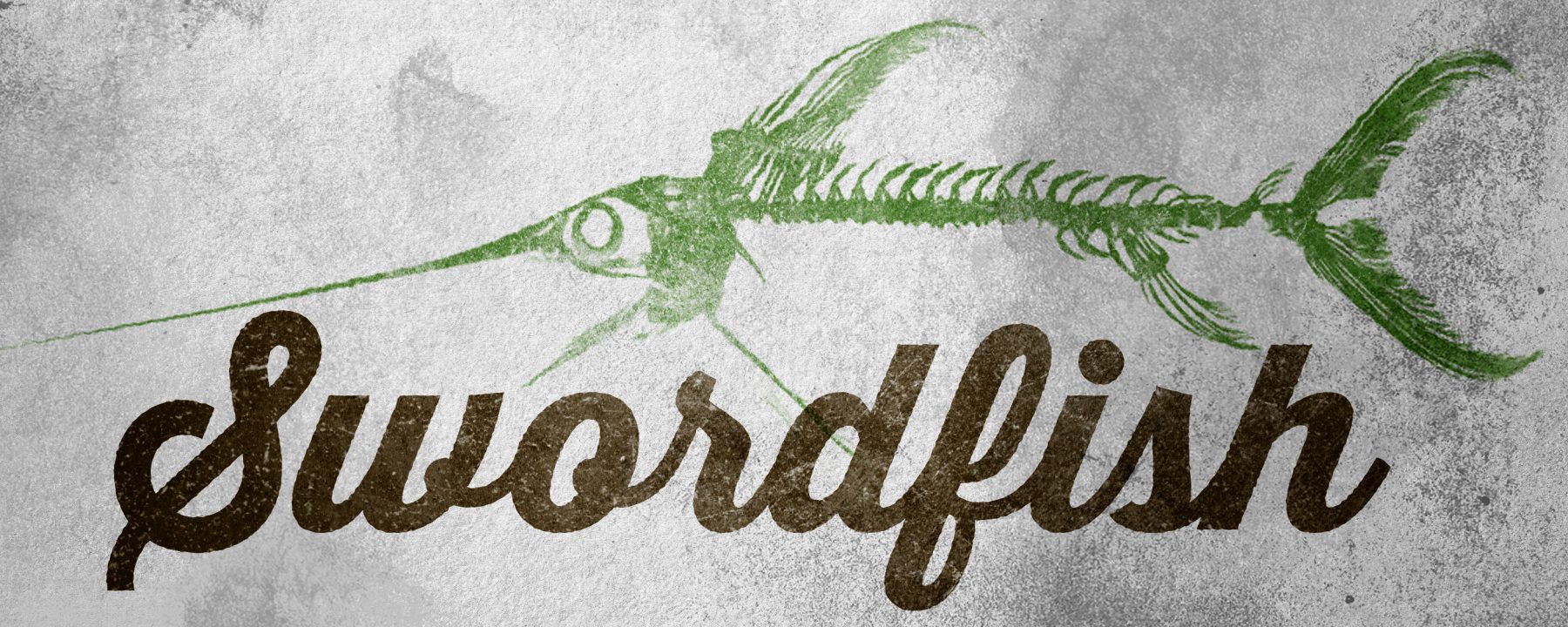Originally published in The Montclarion April 26, 2001
01. Slint – “Spiderland” (Touch and Go Records, 1991)
The Rosetta Stone of post-rock, Slint’s “Spiderland” depends on the careful and subtle use of silence as much as it does on emotive, textural guitars and shape-shifting time signatures. The dark side of the moon compared to the noise and jazz-rock experiments of their 1987 debut, “Spiderland” proved that indie rock could be haunting as well as rhythmic. The dimension of guitar and bass on songs like “Breadcrumb Trail,” “Nosferatu Man,” and “Good Morning, Captain” are the record’s driving force but it is the voice of Brian McMahan – whispered with inflections so subtle you can hear the darkness engulfing him – that is the record’s soul. The epic “Washer,” a painfully tender hush of a lullaby set to sweeping guitars and an explosive, closing crescendo – is a window onto how magnificent Slint was at their greatest. Ten years after disbanding, “Spiderland” still stands as the band’s best work and a model for countless imitators.

02. Smog – “The Doctor Came At Dawn” (Drag City Records, 1996)
Nobody can make pain seem quite as inviting or magical as Bill Callahan. While his early records were journeys into lo-fi noise, “The Doctor Came At Dawn” was a journey of a different kind, an introspective masterpiece that is so emotional and intensely personal, it feels like eavesdropping. Callahan’s acoustic guitar is a lonely, aching thing, paired perfectly with his spare, confessional lyrics, and even the most bare of sounds expand naturally into symphonies. On “All Your Women Things,” whispered progressions on guitar give way to soft washes of cello and piano. But the hurt is in Callahan’s voice; when he sings, “Why couldn’t I have loved you this tenderly when you were here in the flesh so tenderly?,” you’re so consumed by his sadness that you feel as if you are bleeding with him. By the time you get to the disturbing “Hangman Blues,” Callahan has been emotive to the point of chills and numbness. “So unbend your toughest smile,” he moans. “I think we’ve got one more mile.”

03. Rachel’s – “Handwriting” (Quarterstick Records, 1995)
The debut of Rachel’s, a 16-piece ensemble from Louisville, Kentucky, sounds more like the score to some long-forgotten or imaginary black-and-white film than the inventive punk rock musings on which many of its members cut their teeth. Loosely categorized as chamber music, “Handwriting” is more dense, atmospheric and experimental than it might appear, a breathtaking, seamless collage of classical motifs, jazz structure, and sound experiments. “Southbound to Marion” and the album-closing “Handwriting” are majestic, sweeping movements with cello, viola and violin, and they comfortably share the space with even more ambitious pieces like the mysterious and shadowy “M. Daguerre,” and “Full on Night,” an ethereal, 14-minute soundscape that opens to pensive electric guitar and closes with a field recording of passing trains. “Handwriting” is a diamond in the rough, a collection of passionate expression that sounds as if it were being played on a distant phonographic cylinder.
04. Gastr Del Sol – “Upgrade & Afterlife” (Drag City Records, 1996)
It all begins with a dissonant moan, the dying breaths of some unimaginable machine. An organ and clarinet begin to hum, sporadically interrupted by shreds of guitar and tape feedback. It wanders deeper, exploring a patchwork of tones and alien sounds, before peaking in a faux-jazz eruption. The song’s “Our Exquisite Replica of ‘Eternity'” and the ensemble’s Gastr del Sol, a crossroads of avant-garde sound constructions, acoustic guitar melodies, post-punk structure, and academic modes of composition. The disorienting sound collages of songs like “Eternity” and “Hello Spiral” collide with the band’s flair for complicated but touching songs on acoustic guitar and piano. “The Sea Incertain,” where an ominous piano duets with a teakettle and white noise is set next to “Rebecca Sylvester,” which ends with a bittersweet guitar bridge, David Grubbs singing, “Why did the sharks watch him drown?” ad infinitum. “Upgrade & Afterlife” ends with an awe-inspiring cover of John Fahey’s “Dry Bones In The Valley (I Saw The Light Come Shining ‘Round and ‘Round),” complete with a hypnotic coda featuring Minimalist composer Tony Conrad on violin. Arguably an eternity before its time, high art has rarely sounded so incredible and so seductive.
05. Pinetop Seven – “Rigging the Toplights” (Self-Help/Atavistic/Truckstop Records, 1998)
Both a postcard from and an elegy for an open road and a lost frontier of possibilities and dreams, Pinetop Seven’s second expands on the breathtaking sonic foundations of their 1997 debut. Whether it’s the shuffling acoustic guitars of “The Fear of Being Found” or the way that Darren Richard’s plaintive, almost angelic voice soars when he sings “I’ve no use not to hide” on “Drying Out,” “Rigging the Toplights” is a colorful and intensely poetic piece of Americana. On songs like “Quit These Hills,” you can almost see the ancient horizons and hear the creaking floorboards of some abandoned Western saloon. Featuring multi-instrumentalists spreading their wings on everything from guitar, piano and upright bass to pedal steel guitar, melodica, xylophones, and banjos, “Rigging the Toplights” is cinematic in scope while sticking closest to the aching heart.
06. Shipping News – “Save Everything” (Quarterstick Records, 1997)
A side project for Jason Noble (Rodan, Rachel’s), Jeff Mueller (Rodan, June of 44) and Kyle Crabtree (Eleven Eleven), Shipping News is an explosive but incredibly dynamic outfit whose sense of precision and live-wire intensity are the stuff of which underground legends are made. The electric guitar and bass lines weave through “Save Everything” like rivers and Crabtree hits the drum kit with abandon, as if he were holding lit sticks of dynamite. “Books on Trains” and “Steerage” move between throttling and pensive without blinking and the 10-minute-long “A True Lover’s Knot,” is a breathtaking opus with mesmerizing, shimmering guitars. Their most recent – “Very soon, and in pleasant company.” – explores the subtle, underlying tenderness of their sound to astounding effect, but the real story begins right here.
07. Shellac – “Shellac at Action Park” (Touch and Go Records, 1994)
“Shellac at Action Park” is Shellac at their finest, an inventive post-punk pressure cooker of barbed-wire guitar lines, lurching bass, and crashing drums. Steve Albini did groundbreaking work with Big Black and Rapeman but, with bassist Bob Weston and drummer Todd Trainer, he seems to have found more space to expand and explore. Pieces like “Song of the Minerals” are visceral and explosive; partnered with songs like “Crow” and “Dog and Pony Show,” they feel almost lethal. Shellac has moved on to do amazing work – last year’s “1000 Hurts” is arguably among their best work to date – but “Shellac at Action Park” remains a landmark for Albini’s trademark of throttling guitars, aggressive guitars and tension-and-release dynamics.
08. The Jesus Lizard – “Liar” (Touch and Go Records, 1992)
Beginning with the pounding, jackhammer rhythms of the album-opening “Boilermaker,” “Liar” grabs you by the jugular and refuses to let go. A rare breed of punk rock record, “Liar” kicks and screams and roars, but another world thrives below the surface. Duane Denison’s guitar is couched in jazz and classical composition but his inverted time signatures and mind-bending chord progressions seem right at home with the band’s blues-laden rhythmic swagger and David Yow’s Vesuvian vocal assault. “Gladiator” and “The Art of Self-Defense” snap at the listener like some furious, uncaged beast but they are cut with the infectious hooks of “Puss,” the pounding velocity of “Rope,” and the more pensive, guitar-drenched reflections of “Slave Ship” and “Zachariah.” The Lizard became more eclectic with 1994’s “Down,” but “Liar” remains a flawless example of bombastic punk energy and venom and The Jesus Lizard’s unflinching dedication to sonic detail.
09. Man or Astro-man? – “Made from Technetium” (Touch and Go Records, 1997)
While their early records were high octane surf-rock filtered through 50s sci-fi and late-night TV static, Man or Astro-man? found their true voice on “1000X” and its full-length successor, “Made From Technetium.” Songs like “Lo Batt.” and “Junk Satellite” are experimental takes on the future of rock music, guitar and bass-driven exercises punctuated with interludes from sound clips and tape loops. “Technetium”‘s greatest moments, though, are when the band take immense risks. “Static Cling (Theme From)” is a menacing, horror film bass line played through filters and distortion and “Evert L. Pipkin” is unlike anything the band had done before or since, a piece dominated by a single guitar and a genuine, lingering sadness. Astro-man? has become increasingly experimental since “Technetium,” but this remains an amazing intersection between surf rock’s rebirth and its mind-bending sonic revision.
10. Brainiac – “Bonsai Superstar” (Grass Records, 1994)
A rock band driven by cracked machines, de-tuned guitars, and a warped sense of humor, Dayton, Ohio’s resident heroes cranked out a handful of unusual rock recordings before singer Timmy Taylor’s tragic 1997 death. “Bonsai Superstar” took the jagged but ambitious pop-punk of their 1993 debut and turned it on its ear, producing songs that owed as much to a punk underground as they did to special effects records, moog machines, and literary Surrealism. “Hot Metal Doberman’s” and “Sexual Frustration” are infectious tunes that blur the lines between indie rock and funk-jazz oddities and “Status: Choke,” all razor’s edge guitar and disorienting sound effects, is one of the band’s best. In their later years, Brainiac became addicted to electronica, releasing the all-too-short “Electro-Shock For President.” But the madness and their unusual musical magnetism started here.









